A Bang! Bang! Trail
Quinnipiac River Linear Trail, Wallingford
September 2022
There was a time when there were no dedicated bike trails like this in the state. So far be it from me to whine about those like the Quinnipiac River Linear Trail that are sort of “just there.” End-to-end paths with no connections to other paths.
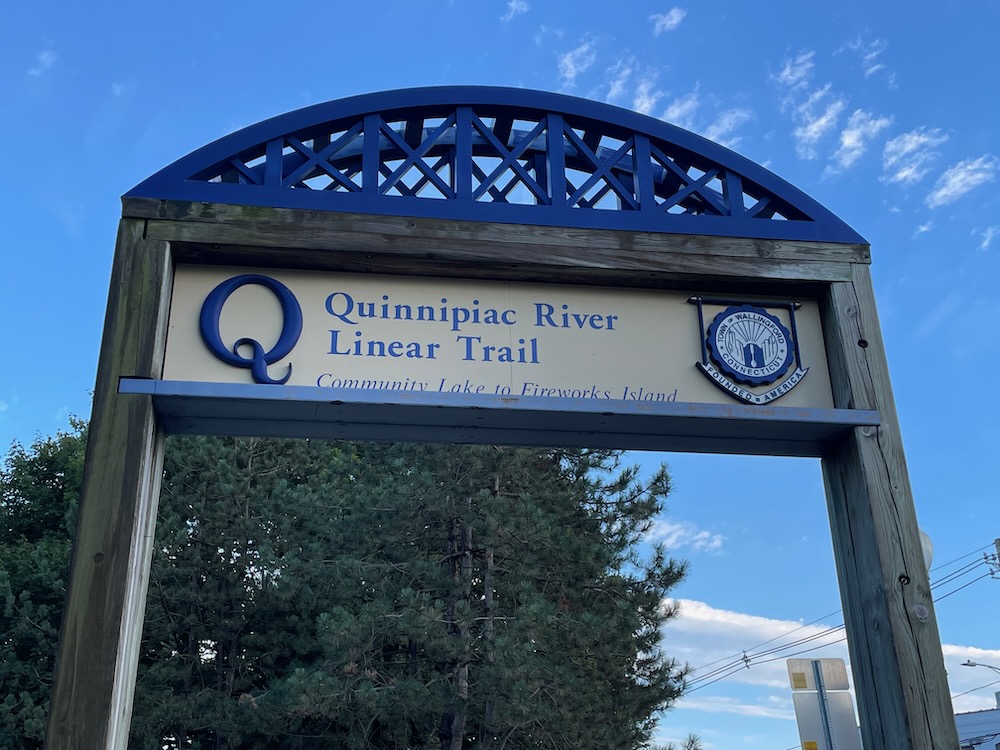
For those who live here, the trail provides an excellent 2.25 (one way) path connecting the Yalesville section of Wallingford to… nearish downtown; safely and away from (and under!) car traffic. That, above all else, is great. Hats off to the planning committee and the town of Wallingford.
Ultimately, the goal is to link the trail with similar ones in North Haven and Meriden. But for now, those connections will have to wait. Probably for a long time… maybe forever.
This trail was doubled in length from its original southern mile or so; a path that traveled north from its southern end at Lakeside Park, underneath The Wilbur Cross Parkway, and then just… ended. And back then, there was no choice but to turn around and head back, because it ended literally in an overgrown Quinnipiac River floodplain next to a highway.
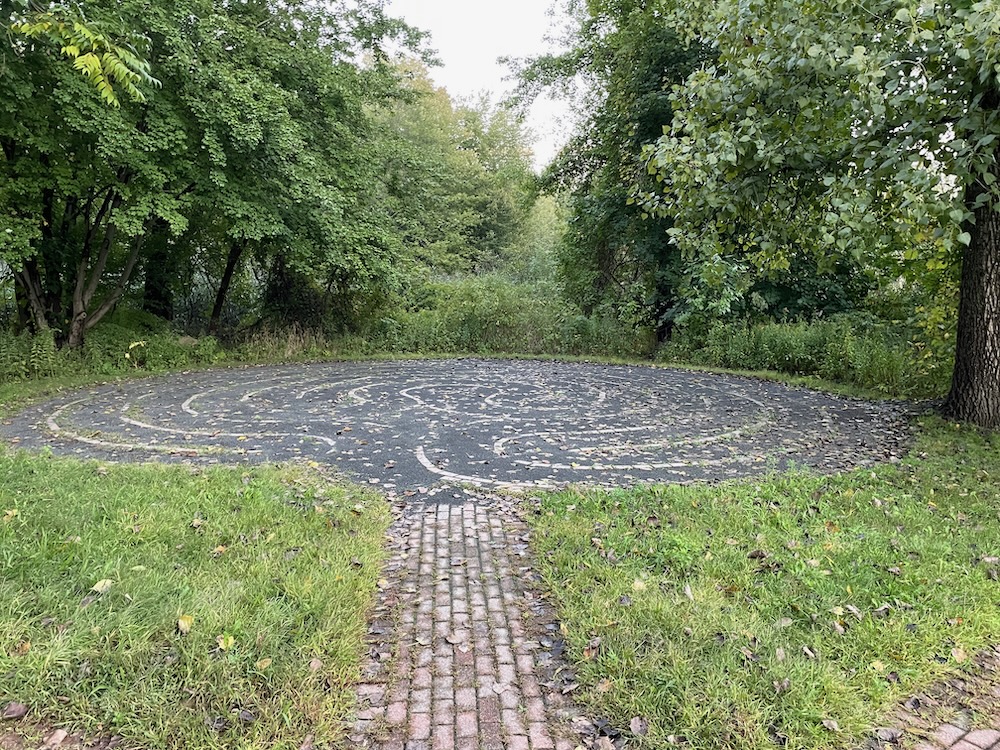
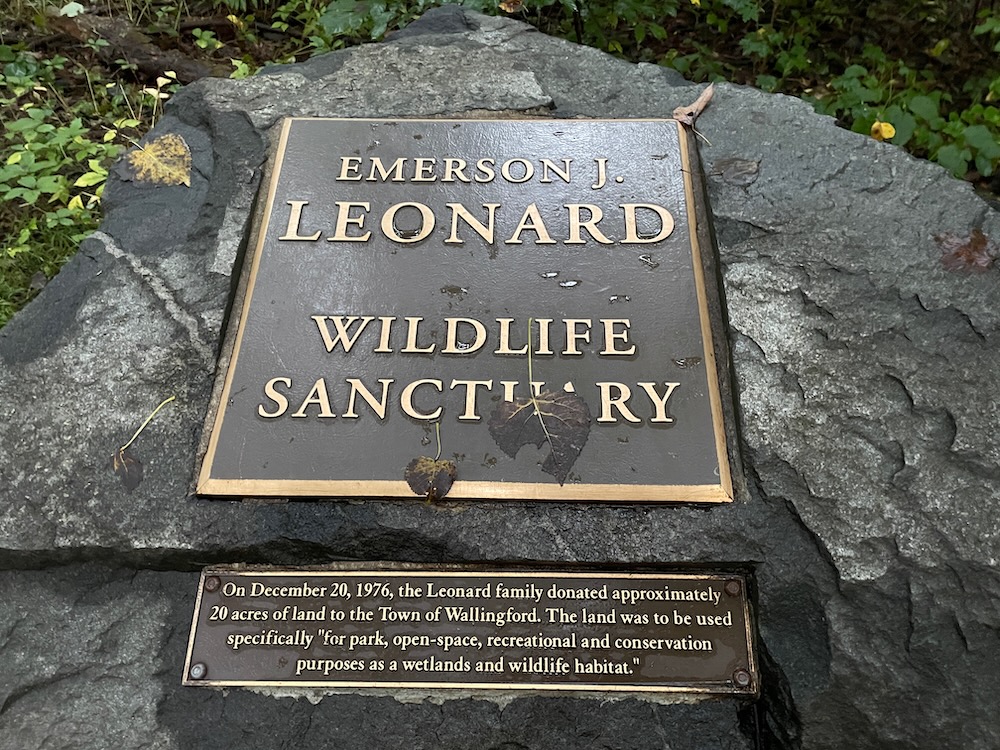
It’s much, much better now.
I began at the southern end on Hall Avenue near its messy interchanges with the Wilbur Cross. Lakeside Park is really quite nice; ball fields, tennis and basketball courts, and a playscape. Oh, and the former compound of a wife-swapping communist silverware-making Bible cult.
So I started pedaling and – excuse me? What’s that? I said something about a wife-swapping communist silverware-making Bible cult? Right here in Wallingford?
You bet I did! The man-made lake here is called the Wallingford Oneida Community Lake, and existed here thanks to an Oneida leader, John Humphrey Noyes, rolled into town in 1851. Rest assured these where European white weirdos having nothing at all to do with Native American Oneidas. From the New York Times:
Mr. Noyes, a preacher educated at Dartmouth and Yale, believed in the idea of Perfectionism, making its rounds at that time in religious circles, that the Messiah’s second coming occurred when the Temple of Jerusalem fell in 70 A.D.
Thus, everything that came after on earth was technically heaven. So, while humans were here in heaven, they might as well attempt to become as selfless and perfect as Christ.
Among Perfectionism’s more radical tenets: in the commune, all property should be shared, never owned. All men and women were free to sleep with each other. Parents raised all children, not just their own.
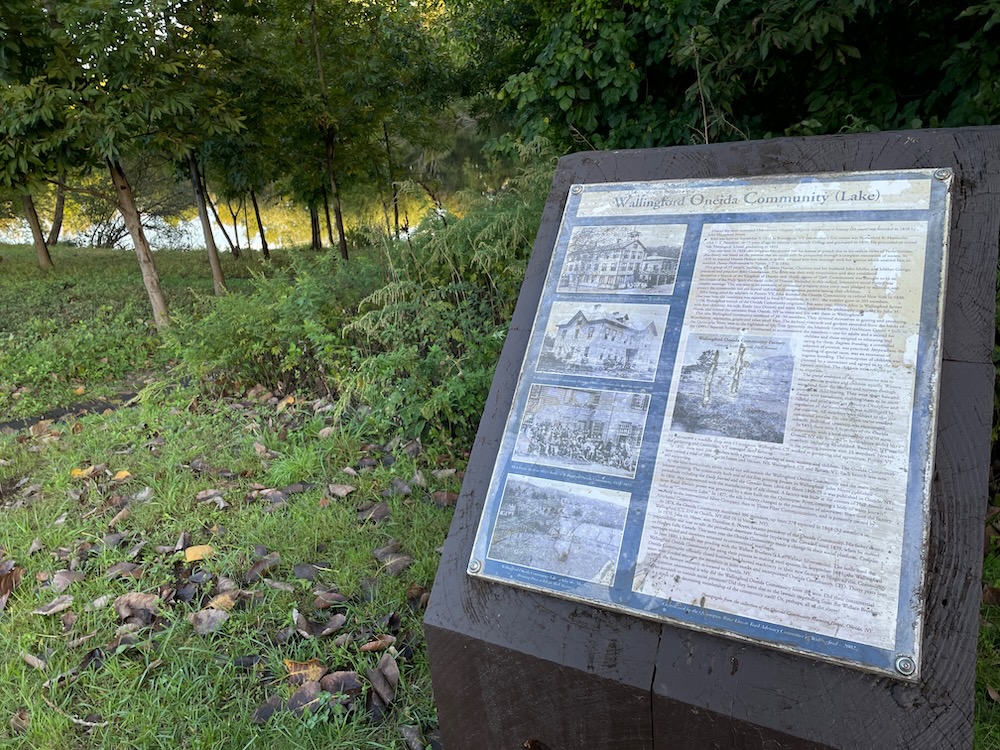
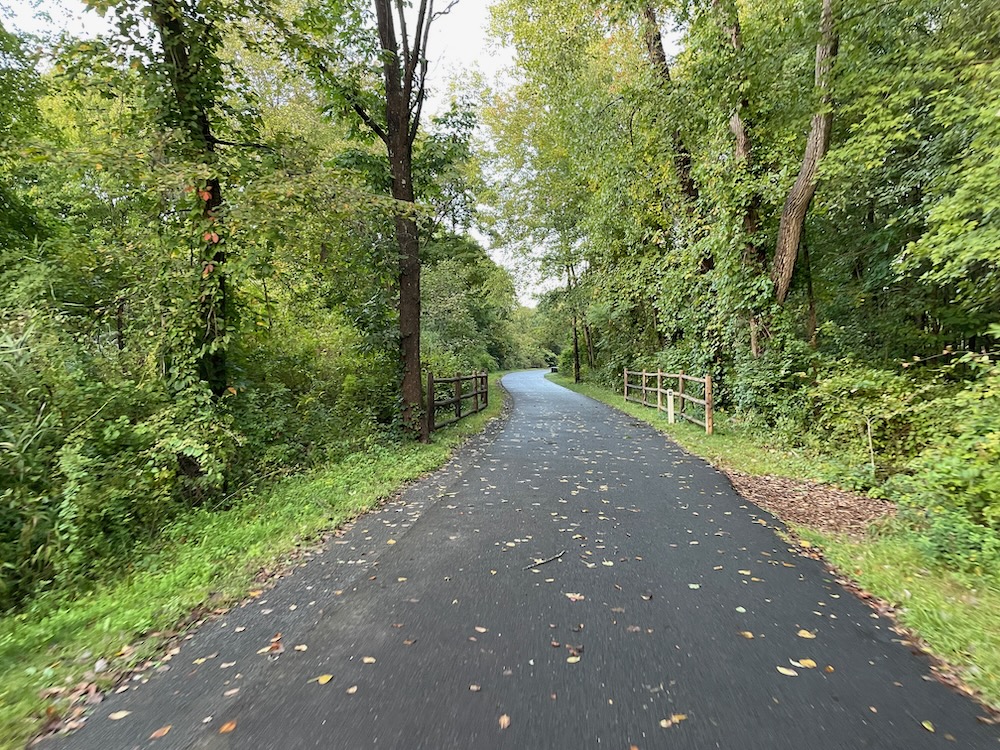
The commune grew to about 50 members who moved from an agricultural subsistence to manufacturing. They dammed the Quinnipiac, built a mill, and created a silver factory. Silver-smithing was big in nearby Meriden, but it’s also what sustained the Oneida cult. (Despite their strict anti-capitalist founding principles, in 1881 they moved to New York to incorporate themselves as one unified, powerful, limited-liability corporate behemoth that continues to make silverware to this day, still under the name Oneida.)
In the 20th century, the lake dried up and disappeared, but Wallingford and the state recreated it in the early 2000’s for all of us to enjoy. If there’s anything I love, it’s wacky cults of Connecticut’s past. Shout out to the Oneidas of Wallingford – and shout out to Wallingford for putting a signboard up explaining all of the above. The Amphenol building across Hall Avenue is the former Oneida factory.
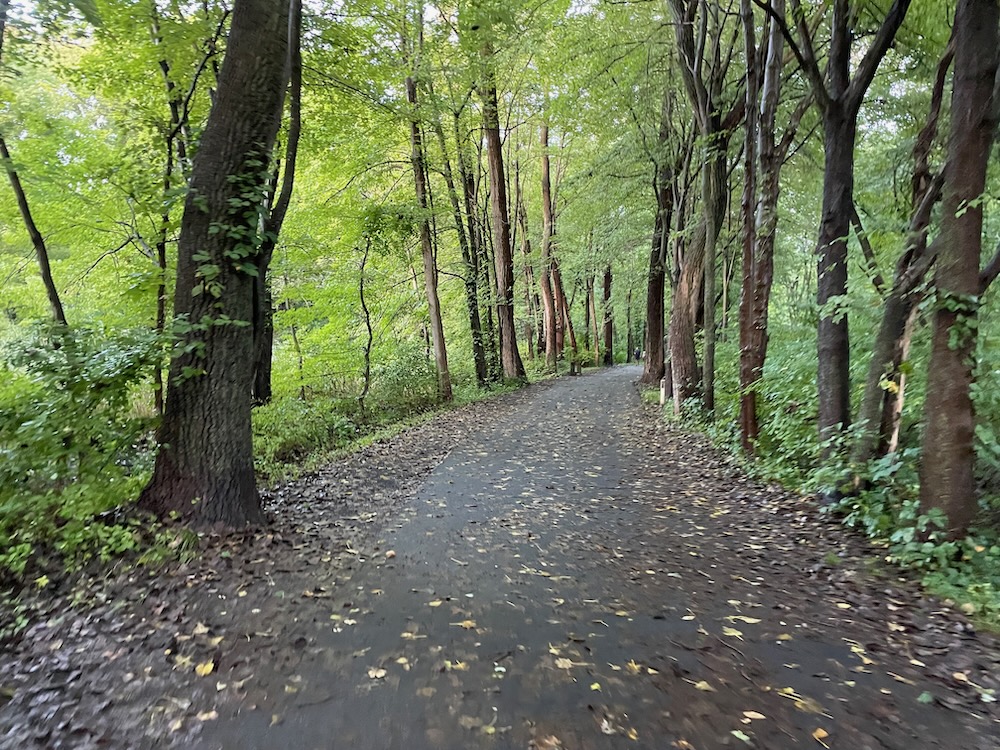
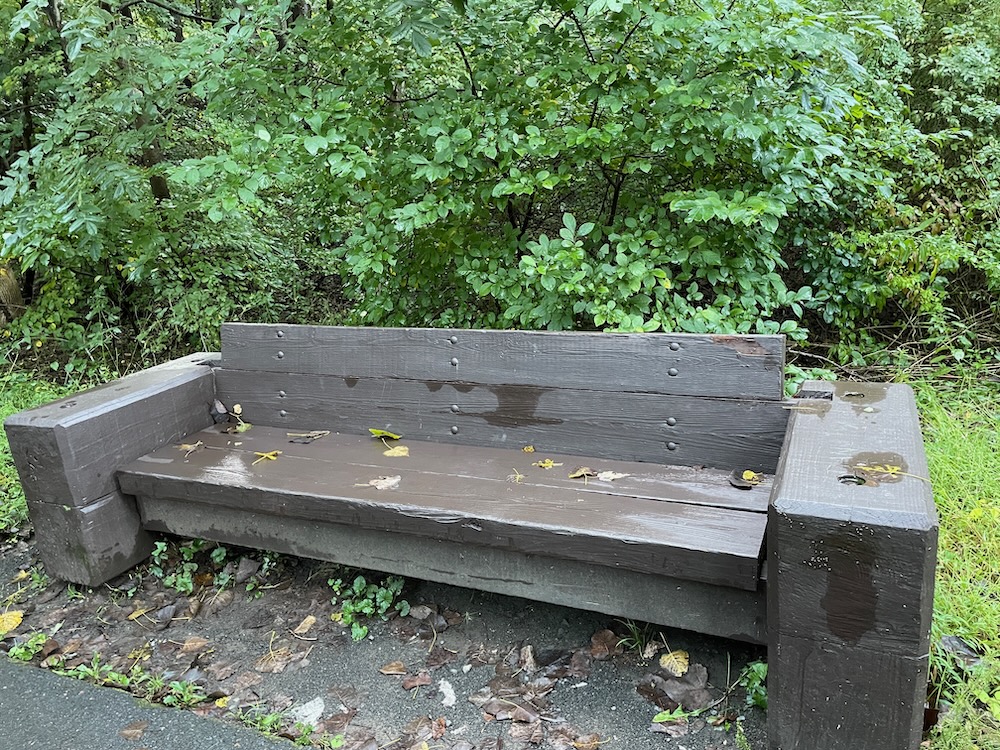
This trail packs in a lot of stuff in 2 miles. After the loop near the lake heading north, there’s a little labyrinth with stone benches and explanatory signage and a little garden and everything. Perhaps people need to rid themselves of the ghosts of wife-swapping capitalistic communist Bible cultists here or something.
I rolled past the Emerson Leonard Wildlife Area and its side trails. Neither the southern lollipop loop trail begins with a boardwalk nor the loop trail a short distance ahead contain too much of interest, but of course I checked them out.
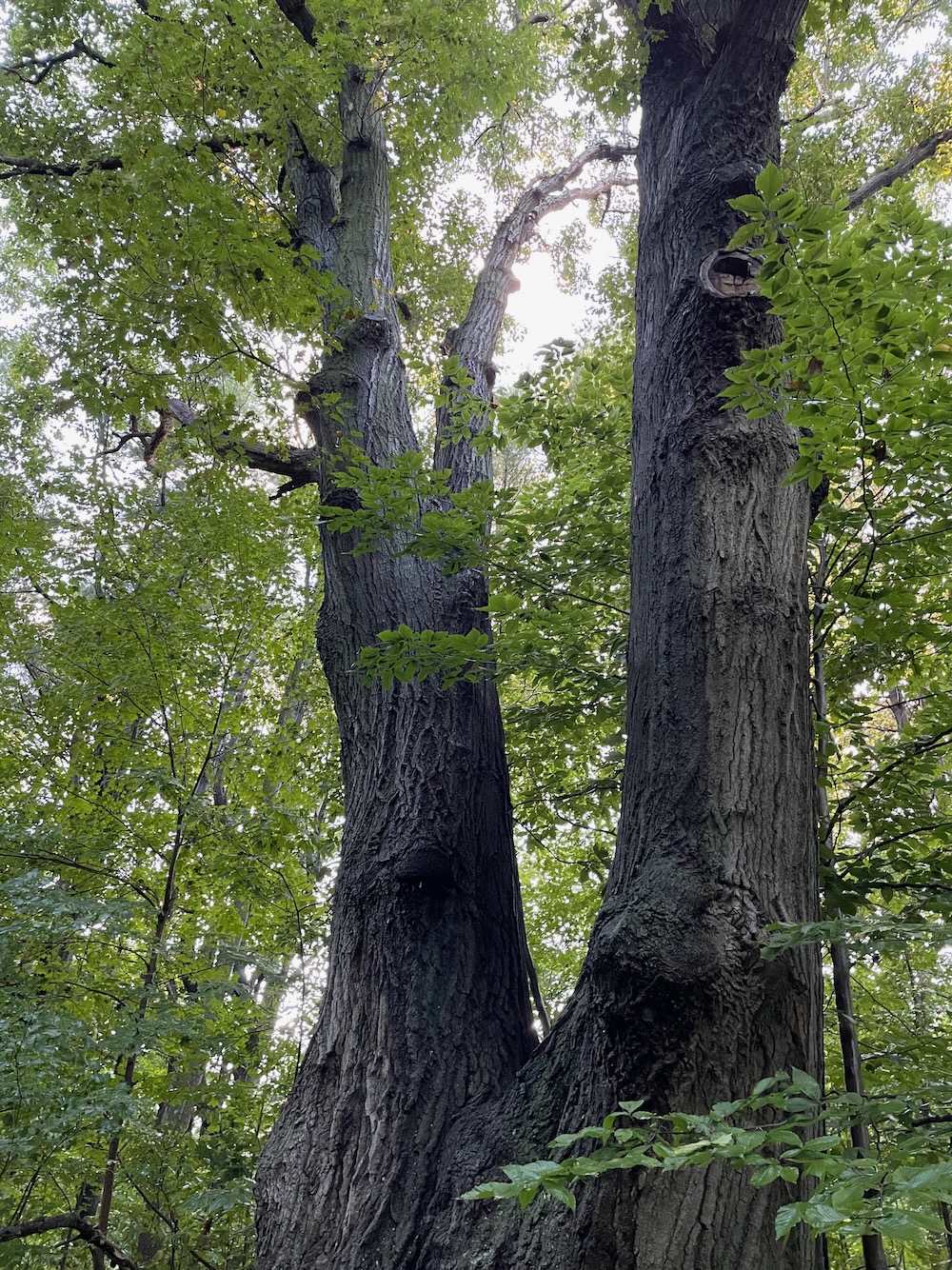
Oh look, it’s one of Connecticut’s largest red oaks! With its own explanatory sign! It’s a regal tree and I’m glad the trail highlights it here. Really uncomfortable benches appear here and there along the path – which is very nicely paved by the way. No potholes or cracks (in 2022).
Views of the river appear here and there, and an attractive bridge spans it next to the highway. (It’s much prettier and more peaceful than that sounds, as the Wilbur Cross isn’t quite I-95 in terms of size, noise, and traffic volume.)
After the bridge, I entered the tunnel underneath the highway and into the floodplain area. I found the little “down ride your bike through water and drown” signs to be a bit over the top and even humorous, but I since we know people are idiots, I guess they’re necessary.
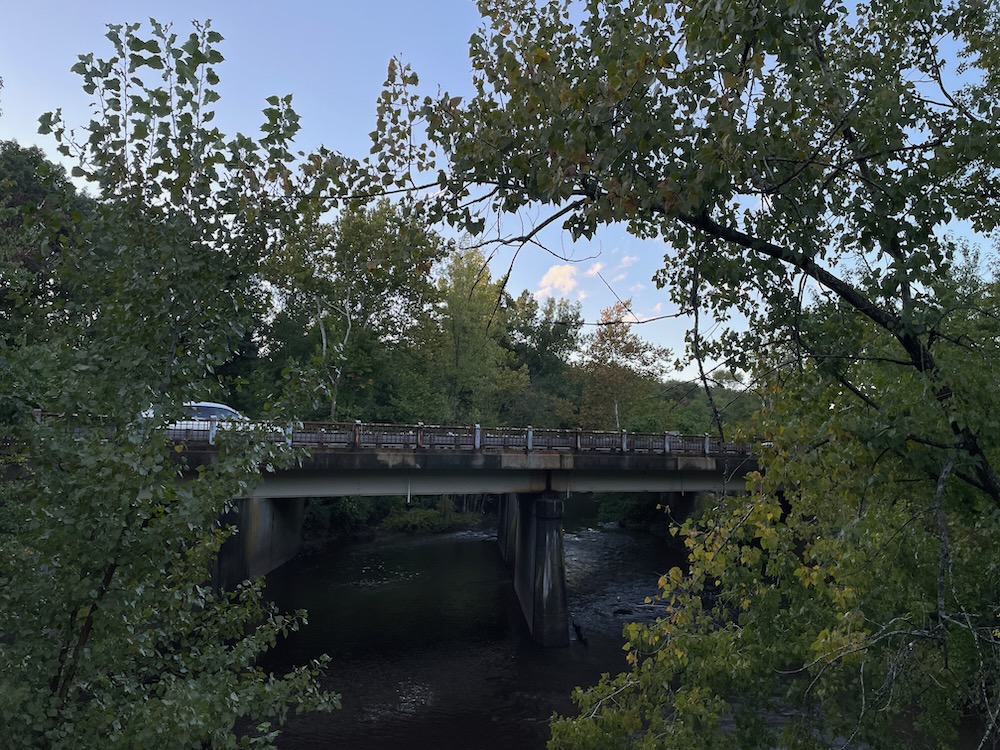
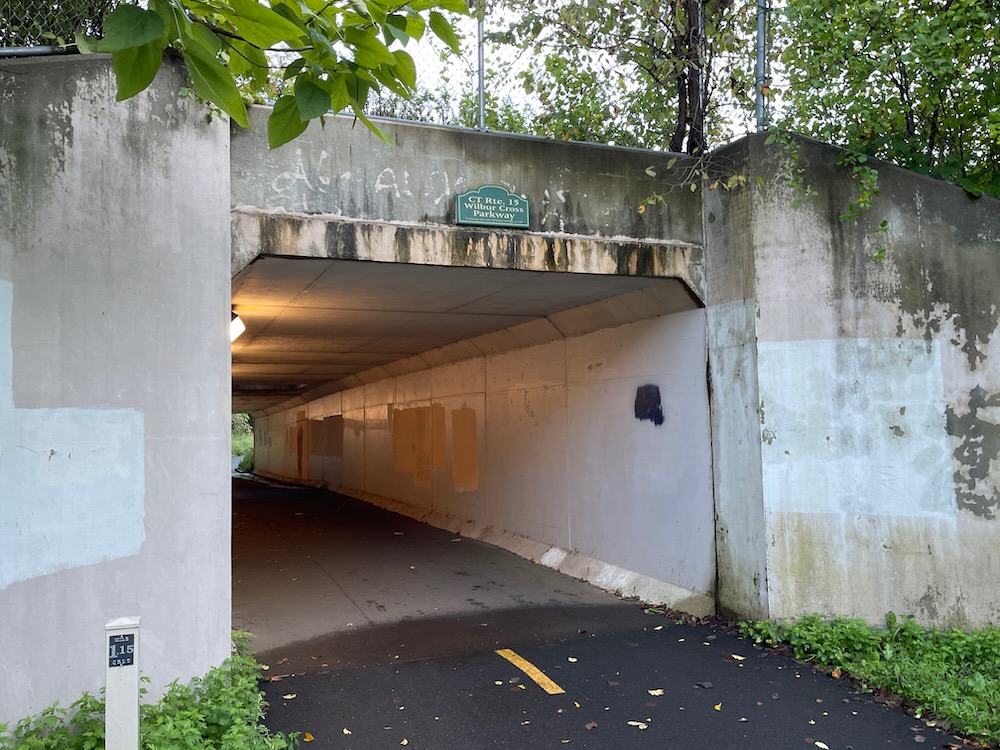
From this point north, the rest of the trail is “new.” And it’s really quite nice. You barely know you’re right next to the highway. Signs warn of a “sensitive habitat” and urge people to stay on the trail. The large sign at the northern end explains that the discovery of the exceedingly rare and endangered “false mermaid weed” in this area necessitated a re-routing of the linear trail, and moved the location of one of the bridges. The plant it tiny, super rare, and only is seen for 6 spring weeks or so. Don’t trample it.
Another new and quite nice bridge across the Q-River again and onto a piece of land called Fireworks Island. There are no fireworks here and it’s not an island, but – you guessed it – there’s a cool history here! For “here” was once home to the “Fireworks Capital of Connecticut!”
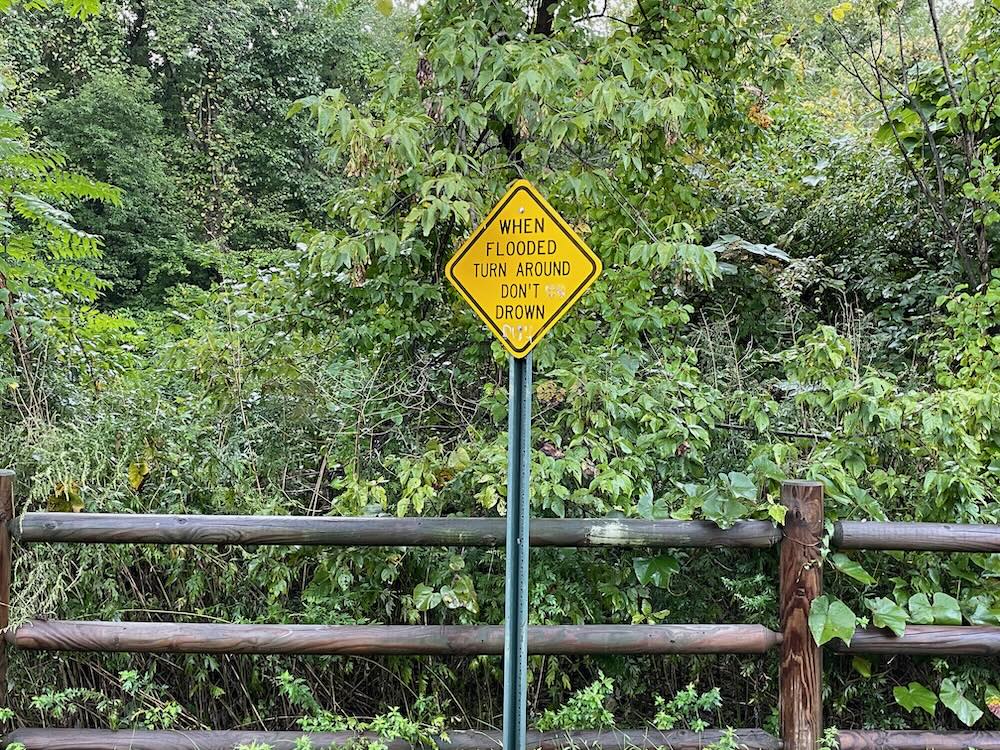
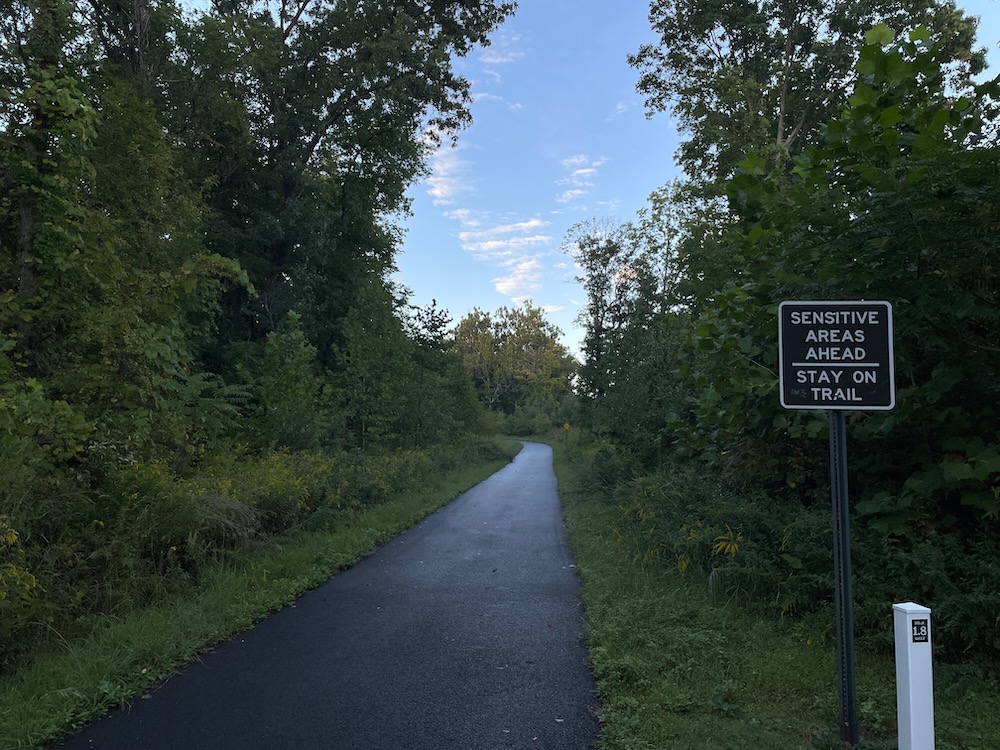
Fireworks Island was created when a manmade channel — known as the “Yalesville Raceway” — was dug in the 1850s to harness the water power of the Quinnipiac. According to a(nother) informational kiosk, the raceway was dug by hand and was 30-feet wide and 8-feet deep. The stone walls and locks of the raceway can still be seen from a bridge at the northern end of the trail – the one you’re not allowed to walk or ride beyond according to its signage.
Back in the day, M. Backes and Sons fireworks company maintained a storage facility on the island. M. Backes and Sons started as a company in 1876 manufacturing caps for cap guns. It began to make fireworks like fountains and spinners for “backyard use” and flares and signals during World War II. A second company run by Donato Gammerino began elsewhere in Wallingford in the 1890’s and together, the two companies produced literal tons of fireworks for the state and region; giving Wallingford its explosive, yet long forgotten, nickname.
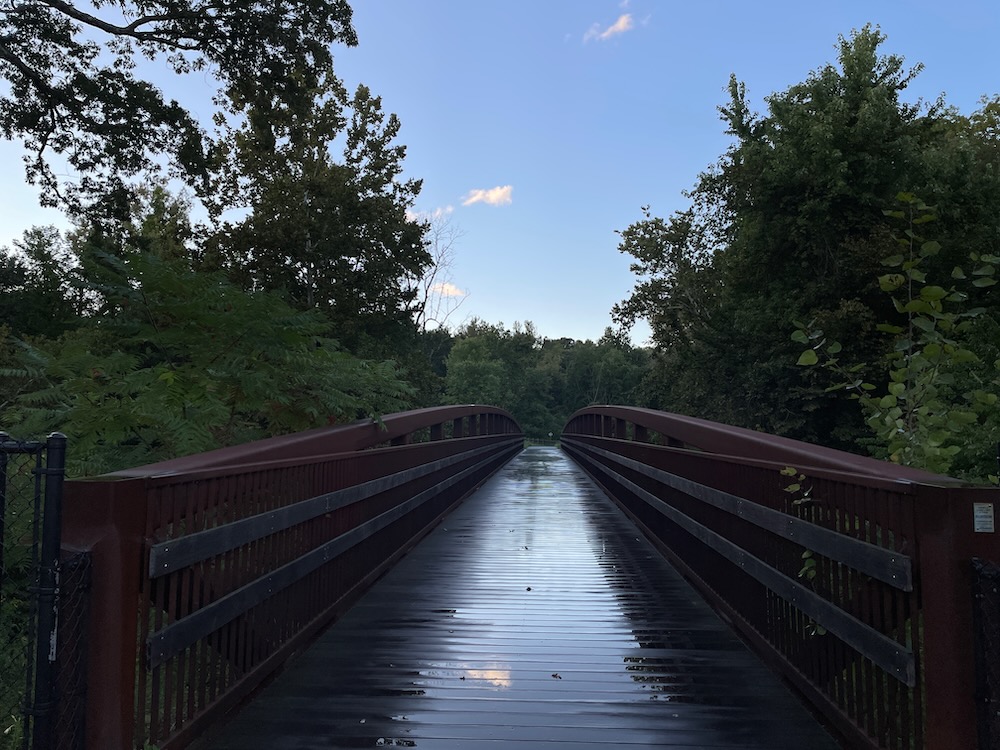

M. Backes and Sons eventually closed in the early 1960s after rebuilding several times as – you’ve just got to laugh – explosions destroyed several factories, breaking windows and damaging homes for miles around. The not-remmotely-an-island island was christened Fireworks Island by the linear trail committee that routed the path here.
I reached the northern parking area and the large kiosk that has all the “island” and mermaid-weed information on it, as well as some facts about the Quinnipiac people. There’s also a very hopeful map that connects this trail to similar efforts north and south of here, but there’s so much development here, that would be a Herculean task. I wish them luck and many millions of dollars of course.
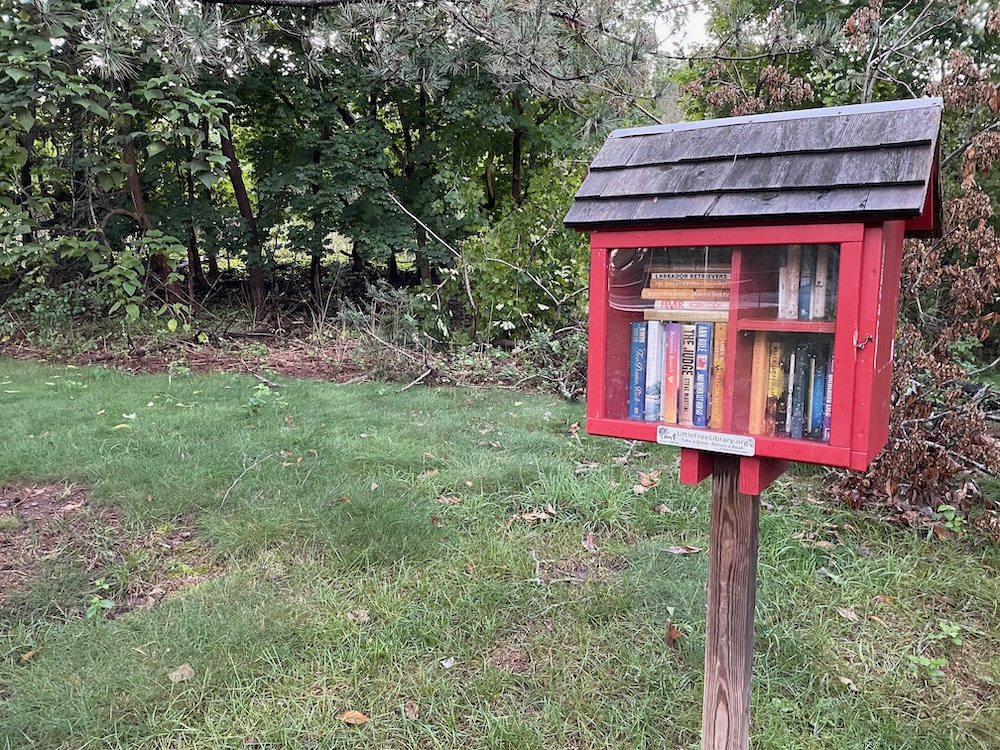
LFL at the southern end!
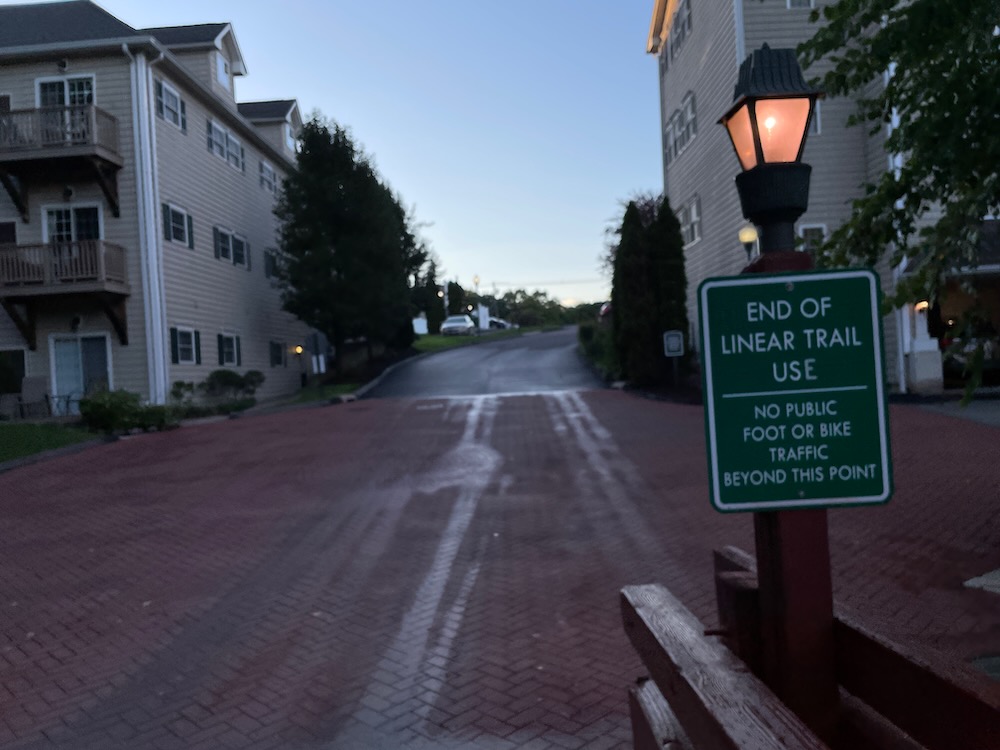
Despite shadowing the Wilbur Cross Parkway, the completely flat trail alongside the river gives visitors a good sense of the natural world along its wetlands and floodplains. It’s a nice enough trail, but for me it’s the history of the place that really made it worth my while. Well done, Wallingford, well done.
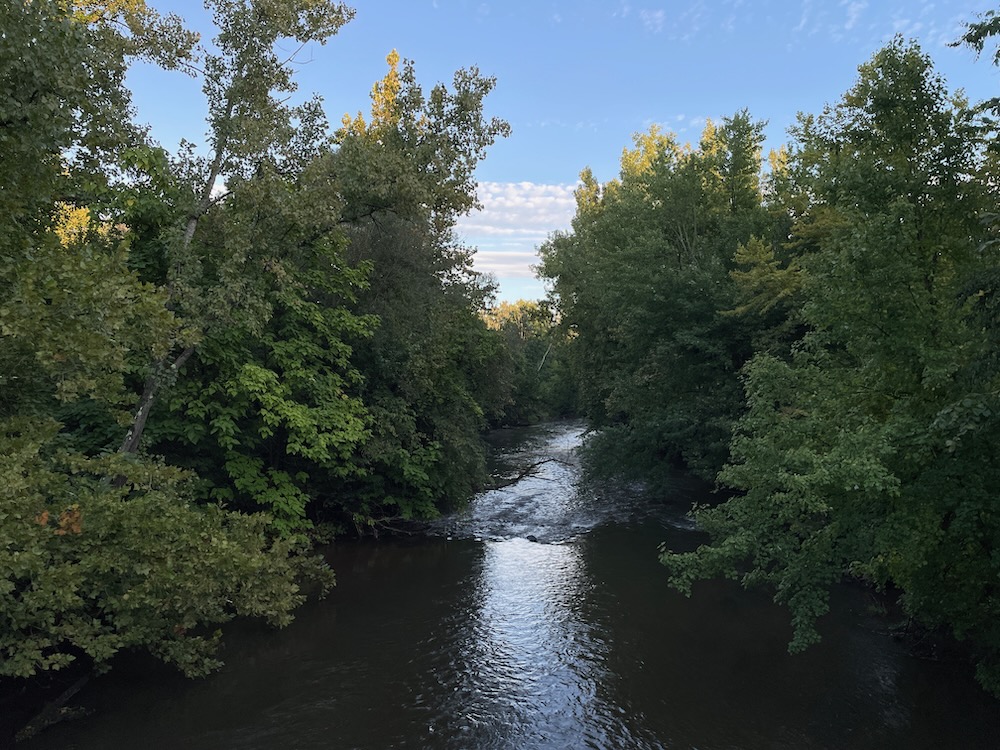
![]()
Cycling, Multi-Use, & Rails-to-Trails Paths

 Robert Meloy says
Robert Meloy says
June 25, 2024 at 3:49 pmare Ebikes allowed or not?